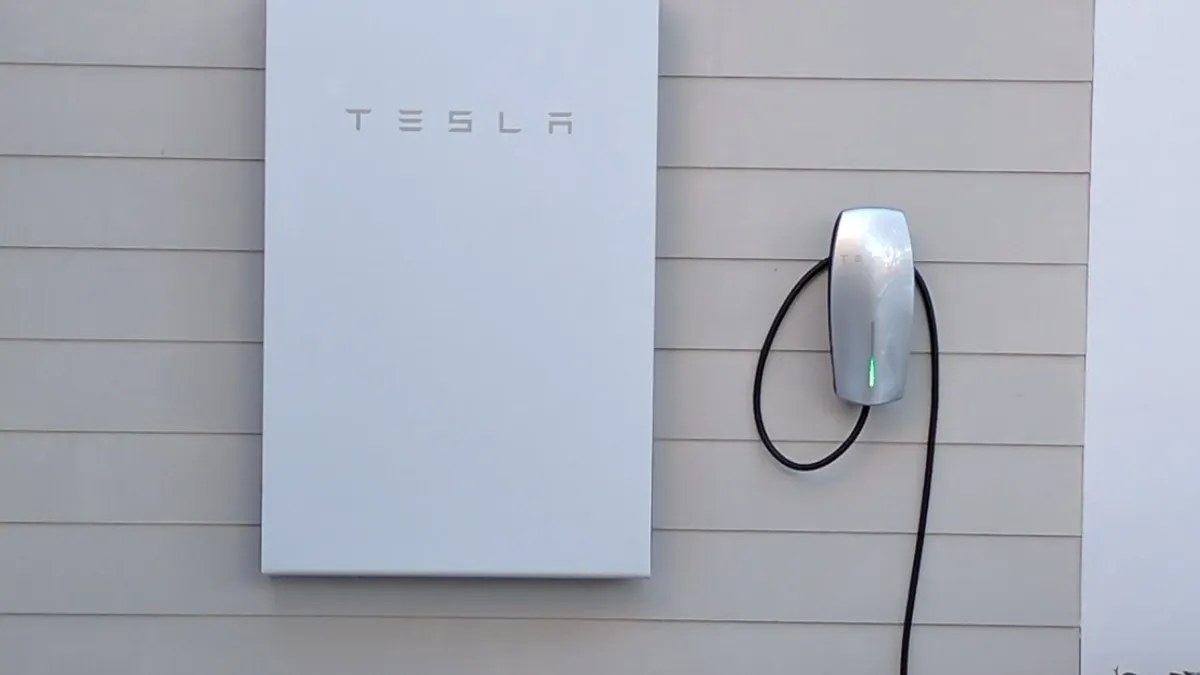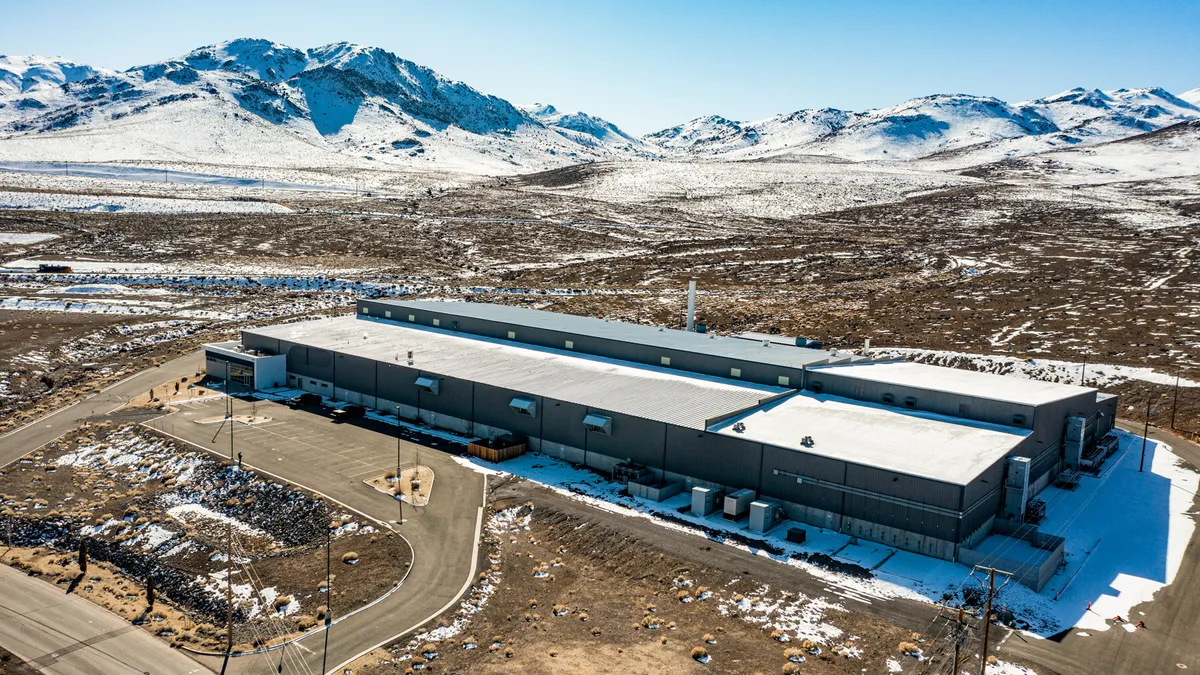Just in time for the holidays, New Hampshire has given U.S. utilities a template for a groundbreaking utility-owned, customer-sited battery energy storage pilot.
Liberty Utilities has proposed a pilot that will initiate one of the most ambitious tests of a utility's ability to use behind-the-meter battery storage systems. A settlement that will move the 12-month proceeding forward was agreed to Nov. 19 by environmental and consumer advocates.
"The utility's insistence on owning batteries makes it an outlier nationally, but the program as a whole puts Liberty at the cutting-edge on the battery use case."

Chris Rauscher
Director for Policy and Storage Market Strategy, Sunrun
Because it would be only the second regulator-approved program for utility ownership of behind the meter resources in the country, third-party solar-plus-storage installers Sunrun and ReVision Energy did not sign on to the final settlement. But, appeased by the promise of a major role in the program's phase two, which would be one of the first in the U.S. to include private sector participation alongside the utility, they elected not to oppose it.
"The utility's insistence on owning batteries makes it an outlier nationally, but the program as a whole puts Liberty at the cutting-edge on the battery use case," Sunrun Director for Policy and Storage Market Strategy Chris Rauscher told Utility Dive.
Many investor-owned utilities are using batteries to shave peak demand, provide grid services and make utility systems more flexible. But those projects are subcontracted to third-party providers.
Stakeholders in New Hampshire's DE 17-189 proceeding are no longer leaving battery storage to the private sector.
With private sector and utility participants accepting compromises to the original proposal made by Liberty in December 2017, the New Hampshire Public Utilities Commission (NHPUC) is expected to approve the settlement after post-Thanksgiving hearings. Then, Liberty must demonstrate it can cut peak system demand and deliver a positive net present value (NPV) to its customers.
If it can, opportunities may open up for bigger accomplishments in grid modernization and other forward-looking NHPUC dockets.
The settlement
In the pilot's first phase, Liberty Utilities will offer 200 Tesla Powerwalls. Each participant takes two batteries and controller software at a one-time, upfront installed fee of $2,433, or a ten-year $25/month charge. The retail installed price would be $16,500, Liberty Senior Rates and Regulatory Affairs Analyst Heather Tebbetts told Utility Dive.
Vermont's Green Mountain Power (GMP) currently has the only major U.S. utility-owned, customer-sited battery storage pilot. Its 2,000 Tesla Powerwalls went to customers at a one-time $1,500 or monthly $15 fee, and a second program will be deployed "soon," GMP spokesperson Kristin Kelly emailed Utility Dive.
The higher-priced Liberty pilot includes features absent from the GMP program. Most significantly, the New Hampshire settlement provides for a second phase, in which Liberty can add up to 300 batteries and third parties can install up to 500, according to Tebbetts' agreement summary. But phase two can only proceed if Liberty shows it can cost-effectively reduce system peak demand with customer-sited batteries.
The original proposal's $1,000 or $10/month fee was increased because NHPUC staff "was adamant the program's NPV be positive so it will not increase rates," Tebbetts said.
New Hampshire code allows the utility cost recovery for its expenditures, but because the fee to customers is still far below the retail installed price of the batteries, NHPUC analysts insisted in their testimony on a "conservative" approach to the pilot's cost-benefit assessment.
Agreeing on a positive NPV was "the longest and most difficult part of getting to the settlement," Donald Kreis, the head of the state's Office of Consumer Advocate, told Utility Dive. "But it shows the pilot will not cause higher rates for either participants or non-participants."
NHPUC concluded the 15-year pilot will provide over $800,000 in net benefits to all customers and an NPV "estimated at $8,470," Tebbetts reported.
The battery storage systems' controllers will allow Liberty access when it anticipates system demand will peak. Up to four times per month, the utility can give participants a one-day notice and discharge their stored electricity to avoid high charges from system operators.
"There will be a learning curve in analyzing our data and predicting peak demand accurately. The challenge will be notifying customers a full day before the peak demand event."

Heather Tebbetts
Senior Rates and Regulatory Affairs Analyst, Liberty Utilities
There was doubt from NHPUC staff about whether Liberty could accurately identify the peak demand a day in advance, according to Tebbetts and Birchard. The agreement allows for "upward and downward adjustments to the return on equity," depending on Liberty's success. GMP has predicted the regional system peak with 100% accuracy and it has had "about 85% accuracy" in identifying the local peak, according to Kelly.
"There will be a learning curve in analyzing our data and predicting peak demand accurately," Tebbetts acknowledged. "The challenge will be notifying customers a full day before the peak demand event."
The most widely endorsed program feature is the time-of-use (TOU) rate required of participating customers, because its price signals to battery owners will be the most significant customer-facing advance over GMP's program, Tebbetts said.
Peak rate prices will vary according to demand shifts. By adapting their behaviors, participants can reduce their bills by shifting activity to low-priced time periods and using stored low-priced generation during higher-priced periods.
Typically, batteries will be charged nightly by the utility, when rates are lowest, and used by the utility on behalf of customers the next day, when rates are highest, according to Tebbets. Outside the pre-announced peak demand periods, customers will be able to make their own decisions about the stored power.
The TOU plan was meticulously based on "cost causation," according to testimony from former NHPUC commissioner Clifton Below and Office of Consumer Advocate consultant Lon Huber, who co-designed it. The plan is "a progression" from flat rates to "more granular" rates that reflect "strong underlying temporal differences in cost drivers."
A "perfect rate" matched precisely to system cost would require "dynamic pricing, advanced demand price signals and identifying peak events," Huber told Utility Dive. The Liberty pilot TOU rate is a compromise that gives "price signals the customer can manage while requiring the utility to manage the more complex system peaks."
Phase two will begin when the utility shows it can predict 75% or more of its system peaks and reduce system and customer costs. It can then begin adding 300 batteries and working with private sector providers to develop a 2.5 MW "Bring Your Own Device" (BYOD) program with up to 500 third party-managed, customer-sited batteries.
BYOD
Only third-party battery system aggregators capable of dispatching stored electricity from dispersed systems to meet the utility's peak demand without a signal from Liberty are eligible for the pilot's first phase. None have indicated an interest in participating until they can rely on the utility to predict the peak in the second phase.
Within four months of commission approval of the settlement, a stakeholder working group will propose a BYOD program in which aggregators capable of dispatching with Liberty's signal can participate.
The settlement requires the working group to begin with an open call for input from aggregators. The final commission-approved program will begin with a competitive request for proposals (RFP) through which the utility will select aggregators to work with.
The initial Liberty proposal was "fundamentally flawed" because it did not include private sector participation, according to docket testimony on behalf of solar and storage groups. In accepting the final settlement's BYOD program, "the utility deserves credit for recognizing the behind-the-meter storage opportunity," Sunrun's Rauscher said.
Having both BYOD and utility-led programs "will make this pilot a more valuable experiment because it gives customers more choice," Office of Consumer Advocate's Kreis said.
The key reason private sector providers should be included is that their core competency is selling, installing and managing customer-sited resources, and utilities know their system well enough to accurately predict peak, Rauscher said. "The future should be a partnership between those core competencies."
A BYOD program offers several other advantages, he added, including relieving ratepayers of investment risk, adding solar customers and offering more flexibility.
"[T]he sales conversation at the kitchen table is much tougher if you are trying to explain both a new rate and a new technology. Getting customer education right will be critical."

Madeleine Mineau
Executive Director, New Hampshire Sustainable Energy Association
Both Rauscher and New Hampshire Sustainable Energy Association Executive Director Madeleine Mineau approved of Liberty using the pilot to better understand the impacts of customer-sited DER on its distribution system.
But the settlement could have included the BYOD program in phase one, allowing customers more choice, Mineau said.
It is not clear how the new TOU rate will play out, Rauscher said. "It is ultimately the way forward, but the sales conversation at the kitchen table is much tougher if you are trying to explain both a new rate and a new technology. Getting customer education right will be critical," Mineau added.
And this pilot is only "a first step," she said. "Stakeholders are waiting for the grid modernization docket to move forward and there is ongoing work in the net energy metering successor tariff docket. The hope is that this pilot and those dockets will move towards a more progressive environment for DER."
The path forward
This pilot "is way out ahead of anything bigger utilities are doing in bigger states, but a trend is emerging, and we expect the majority of New England utilities to have BYOD programs by the end of 2019," Rauscher said. Designing Liberty's phase two will be challenging, "but this commission and these docket participants ... are some of the sharpest we have worked with and they will get it right."
The initial proposal to test utility-owned, customer-sited storage as a non-wires alternative (NWA) to distribution system infrastructure investment was eliminated, but the settlement requires Liberty to include a detailed distribution system assessment in its 2019 least-cost integrated resource plan.
"We want to see how customers engage with us, how the technology works and whether we want to be behind the meter in the future."

Heather Tebbetts
Senior Rates and Regulatory Affairs Analyst, Liberty Utilities
"That transparency will allow third parties to see where they can develop lower cost resources that can be aggregated into an NWA," Conservation Law Foundation's Birchard said. "It would be valuable for other utilities to provide that kind of information."
Despite minimal public outreach, Tebbetts already has a waiting list of over 70 interested customers for the pilot's first phase. "We want to see how customers engage with us, how the technology works and whether we want to be behind the meter in the future," she said.
This could be a model for other utilities in New England, but "it is not yet clear to us that there will be both utility-led and BYOD programs over the longer term," she added. "That is one of the things we expect to learn from this pilot."
Stakeholders will begin preparing phase 2 as soon as the pilot is approved and Liberty "has demonstrated it can accurately predict and address peak demand," Birchard said.
A critical subject to be determined in phase two is compensation to participants and aggregators in the BYOD program, she added. Much of that outcome will depend on proposals made in response to the competitive RFP to be designed by the stakeholder working group.
In this settlement, "the utility has shown the path forward and opened doors to third parties and innovation," Birchard said. "The settlement also shows stakeholders can agree on difficult questions dividing utilities and third parties by focusing on sharing access and serving customers."





















